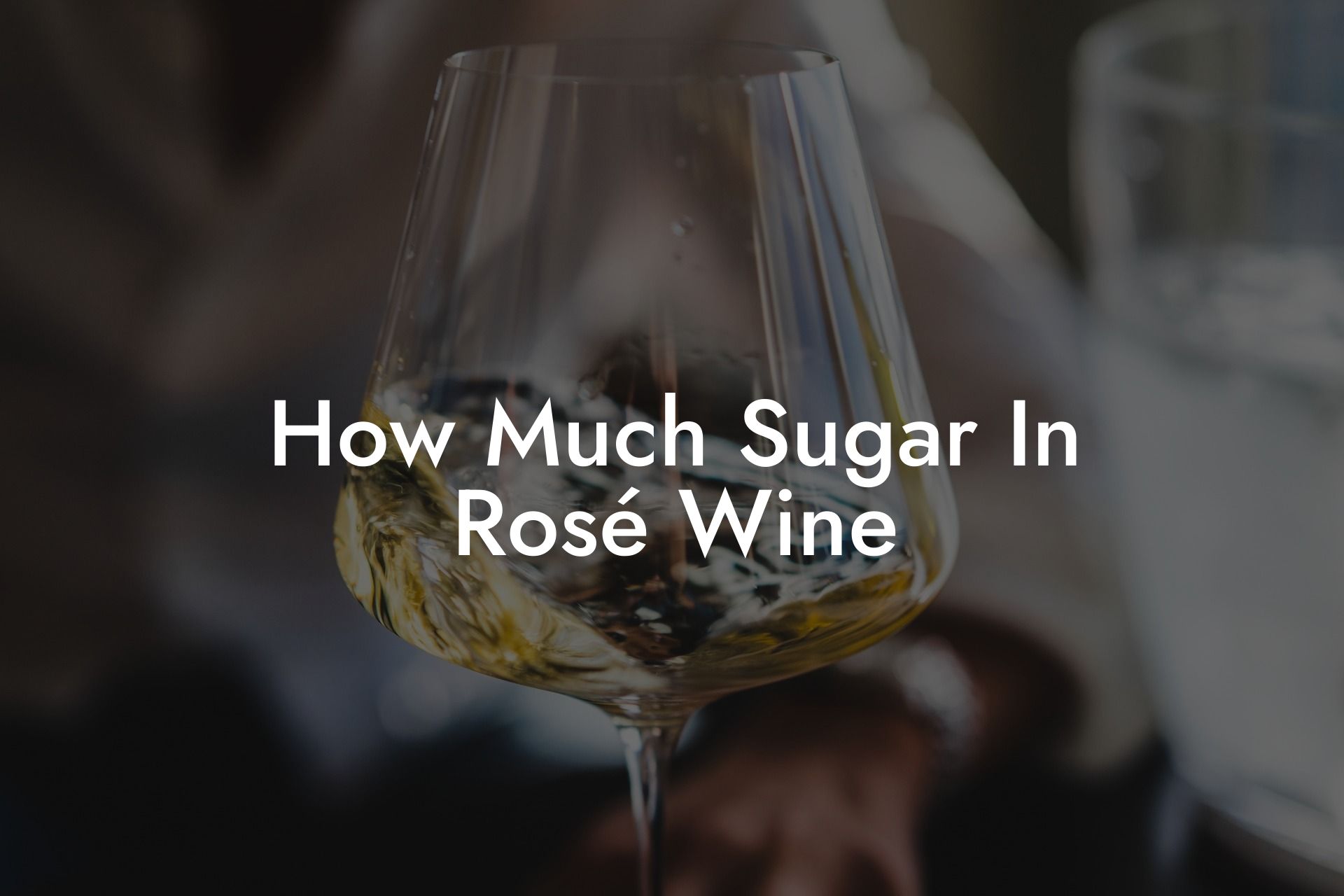Are you a rosé wine enthusiast looking to learn more about the sugar content in your favorite pink drink? You've come to the right place! At Black Wine Club, our aim is to share our knowledge, passion, and insights about everything wine-related. In this article, we'll demystify the sugar content in rosé wine and help you make informed choices based on your taste preferences and dietary needs. So sit back, pour yourself a glass, and join us on this sweet journey into the world of rosé wine.
How Much Sugar In Rosé Wine Table of Contents
What Determines Sugar Content in Rosé Wine?
The sugar content in rosé wine can be attributed to several factors, such as:
Grape Varieties
Different grape varieties have varying sugar levels. Some of the most popular grapes used in creating rosé wines include Grenache, Syrah, Cinsault, and Pinot Noir. Each grape type provides different sugar levels, contributing to different levels of sweetness in rosé wines.
Do You Want to Win a Free Bottle of Wine?
Don't miss out on the opportunity to win a free bottle of wine every week.
Enter our weekly prize draw today!
Winemaking Techniques
The winemaking process also plays a significant role in determining the amount of sugar present in rosé wine. The length of grape skin contact and fermentation processes can influence the final sugar content.
Residual Sugar (RS)
Residual sugar (RS) refers to the natural grape sugars that remain in the wine after fermentation. Depending on the winemaker's intentions, rosé wines can range from bone-dry to sweet because of their residual sugar content.
Common Rosé Wine Styles and Sugar Content
Rosé wines are diverse, and their sugar content can vary significantly from one style to another. Here are some popular rosé wine styles and their sugar content:
Dry Rosé Wines
Dry rosé wines contain minimal residual sugar, usually below 3 grams per liter (g/L). Examples of dry rosé wines include:
- Provence-style rosé
- Italian Rosato
- Spanish Rosado
Off-Dry Rosé Wines
Off-dry rosé wines have a moderate amount of sugar, typically between 3-12 grams per liter (g/L). Examples of off-dry rosé wines include:
- White Zinfandel
- Grenache rosé
Sweet Rosé Wines
Sweet rosé wines have a higher sugar content (>12 grams per liter (g/L)). Examples of sweet rosé wines include:
- Portuguese sweet rosé
- German Roséwein
How Much Sugar In Rosé Wine Example:
Imagine you're at a gathering, and a friend offers you a glass of Provence-style rosé. As this particular rosé is a dry variety, you can expect it to have minimal sugar content (<3 g/L). On the other hand, if you're sipping on a White Zinfandel, which is an off-dry rosé, there will be higher sugar content, between 3-12 g/L. Remember, "sugar" can come in many forms in wine, not just crystallized sugar we're familiar with.
Now that you're armed with the knowledge of sugar content in rosé wines, kick back and enjoy a glass knowing you're making informed choices about your drink. Wine is about pleasure, after all, and understanding the nuances of flavors and sweetness only adds to the experience! If you found this information helpful, please don't hesitate to share with fellow wine lovers and enthusiasts. And, of course, keep exploring other informative articles on Black Wine Club to continue expanding your wine knowledge. Cheers!
Do You Want to Win a Free Bottle of Wine?
Don't miss out on the opportunity to win a free bottle of wine every week.
Enter our weekly prize draw today!












